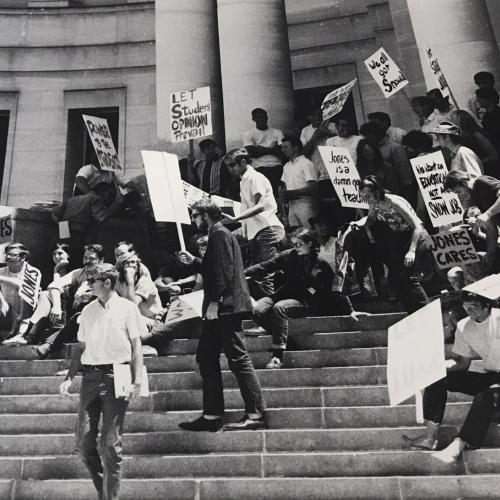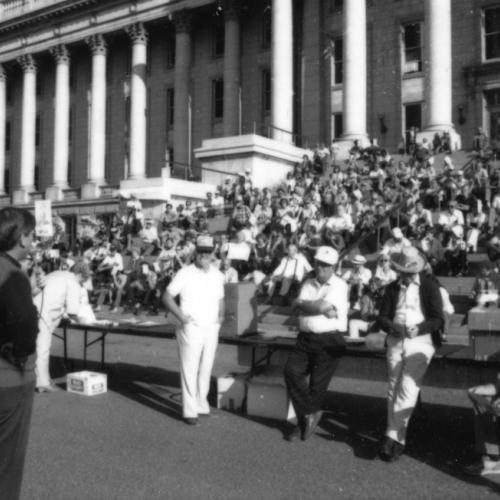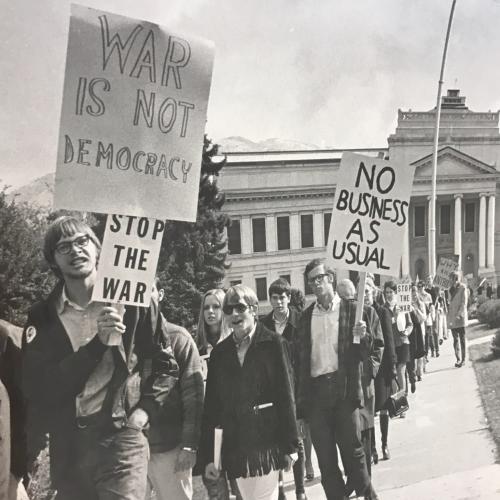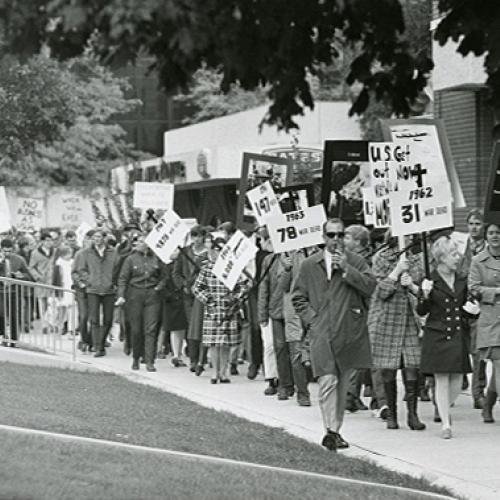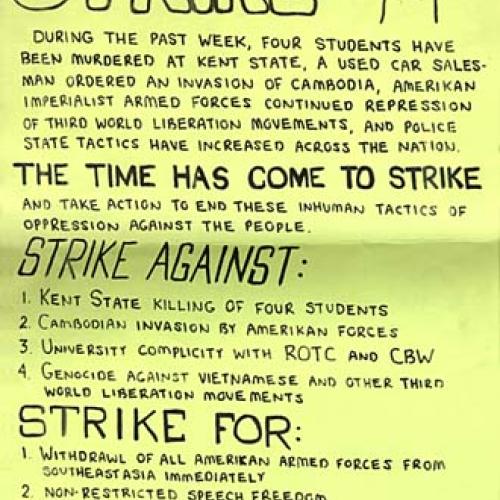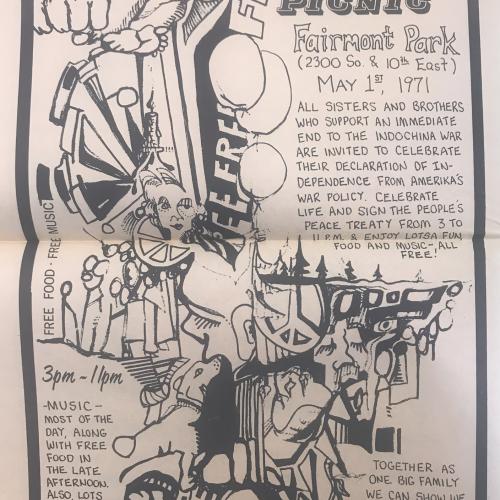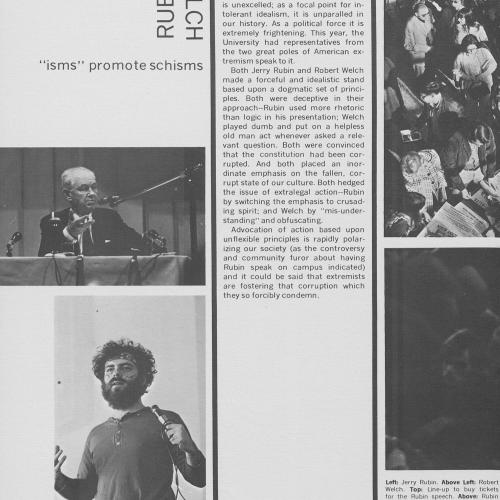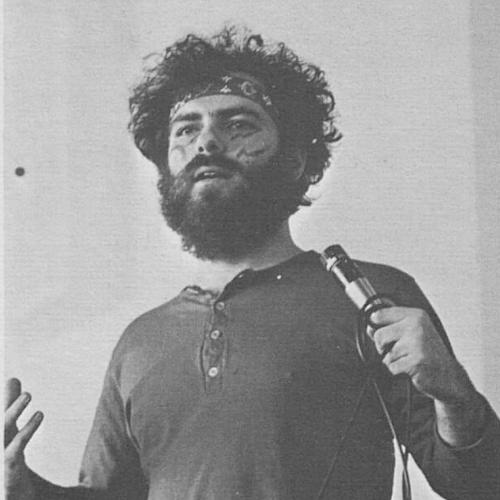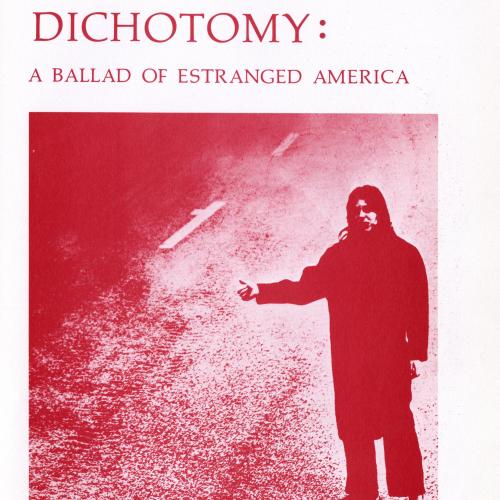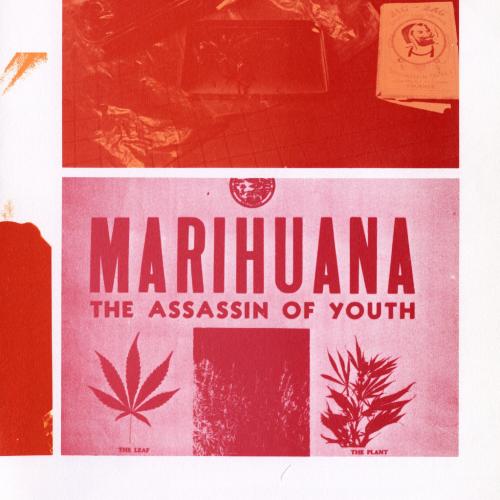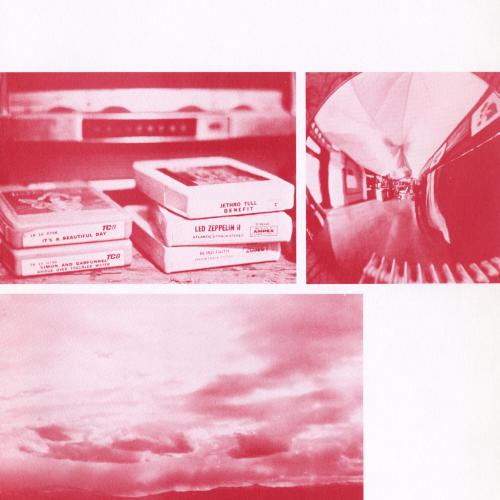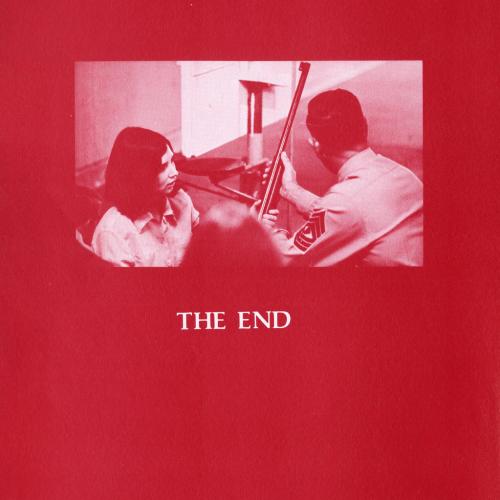Utah on a Turning Globe: Campus of Discontents
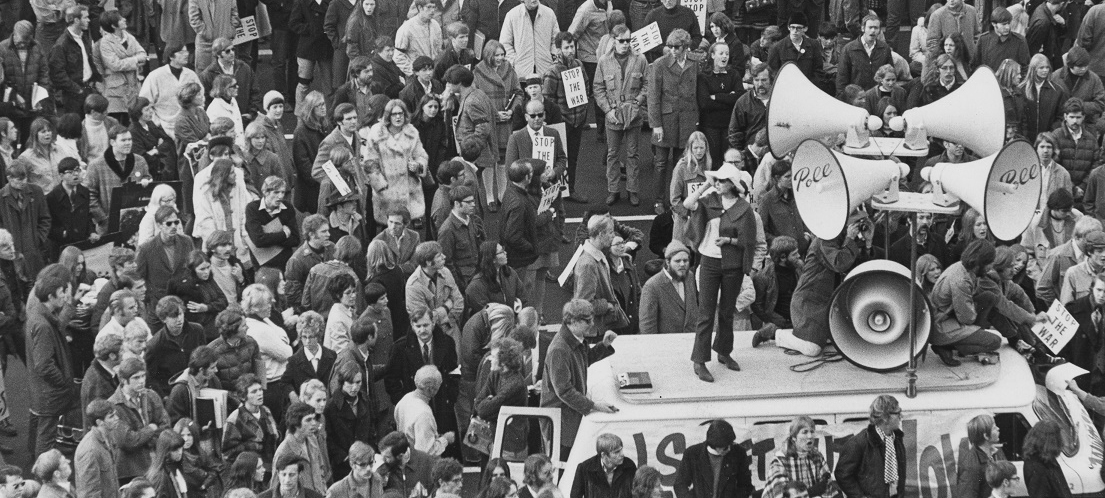
Overpopulation, Ecocatastrophe and Nuclear Genocide… Most college-attending youth is convinced humanity will suicide.The rat of politics always gnaws at the cheese of art. The trap is set. If there’s an original curse, politics has something to do with it.
– Robert Smithson, “Art and the Political Whirlpool, or the Politics of Disgust,” Artforum, 1970
The University of Utah, like most college campuses around the United States, overflowed with passionate debate as the tensions of political and social issues swelled into tidal waves, with America’s involvement in the Vietnam War (1955-1975) one of students’ chief concerns. Thousands marched in protest from the University to the Federal Building in late 1969; those sentiments intensified after the U.S. entered Cambodia the following spring.
After the May 4, 1970 murder of student protesters at Kent State University, four thousand people—mostly students—assembled just south of the University of Utah’s Union Building in protest. Within a week, the U's ROTC building suffered a 4am crude bomb attack, a student sit-in resulted in 81 arrests, demonstrators stormed the school’s newspaper office and halted the presses, stink bombs permeated Spencer Hall, and the Intercultural Center succumbed to arson during a rally in broad daylight.
Campus activists at the U also rallied for social justice and equity. University of Utah administration began recruiting underrepresented faculty and students in 1969 and by 1973 had formalized an Ethnic Studies Program, developing curricula that introduced several areas of focus, including Black Studies, Chicano Studies, and Native American Studies. Thousands of Salt Lake City women joined others across the nation to pressure Congressional passage of the Equal Rights Amendment. The Utah Daily Chronicle published a series of articles on gay liberation.
The tumultuous atmosphere of those days motivated some students at the U to seek out camaraderie through a variety of on-campus, institutionally-sponsored clubs, interest groups, courses of study, and even local politics. For others, contemporary chaos drove them deeper into the arms of the counterculture. Both found their places in Salt Lake City. Despite the concerns sending shockwaves across the University, there were moments of respite to be found in music, theater, sport, fraternities and sororities, and entertainment, from the center of campus to the snow-capped Wasatch peaks. Nevertheless, the University of Utah campus was set to vibrate with the same contemporary charge electrifying every corner of America.
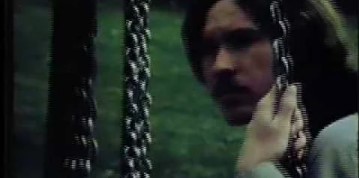
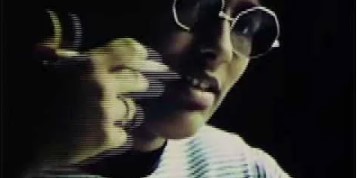
Looking for a Space was commissioned as an orientation documentary for the University of Utah, which would have been viewed by incoming students around 1970. Featuring the voices of student interviewees, the commentary is striking for a variety of frank critiques regarding the University’s policies, purpose, and professors, and for candid comments on the environment (watch part 1), the presence of the military on campus, and racism (watch part 2), and drugs (watch part 3).
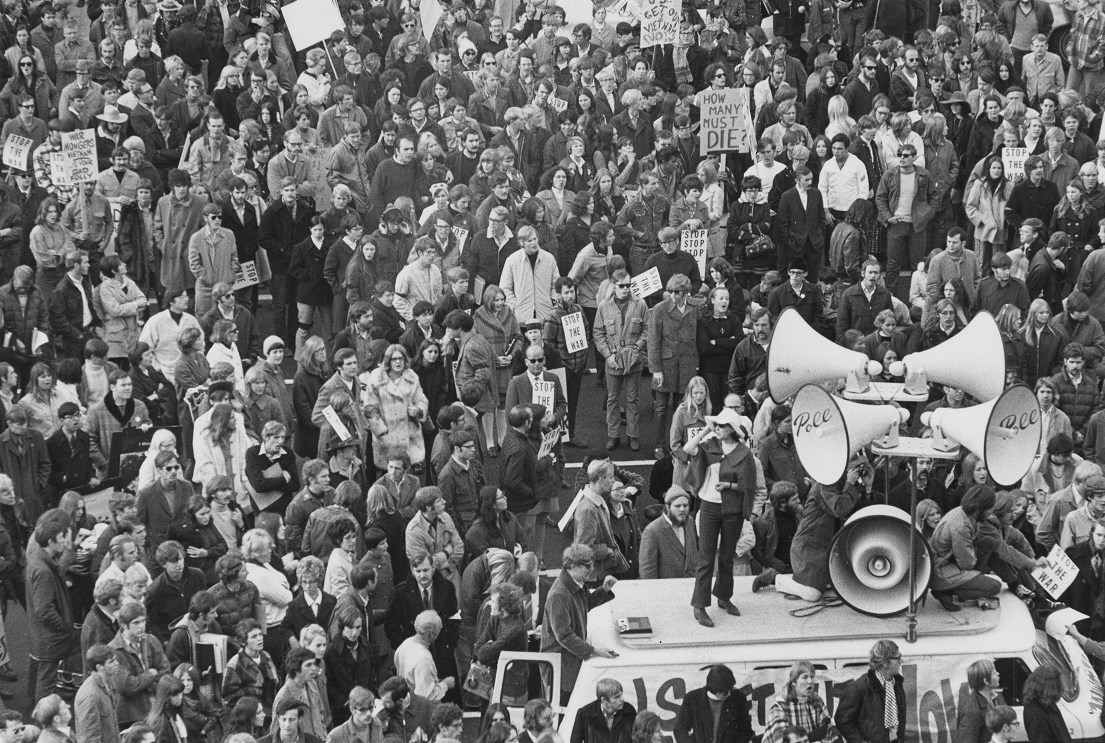
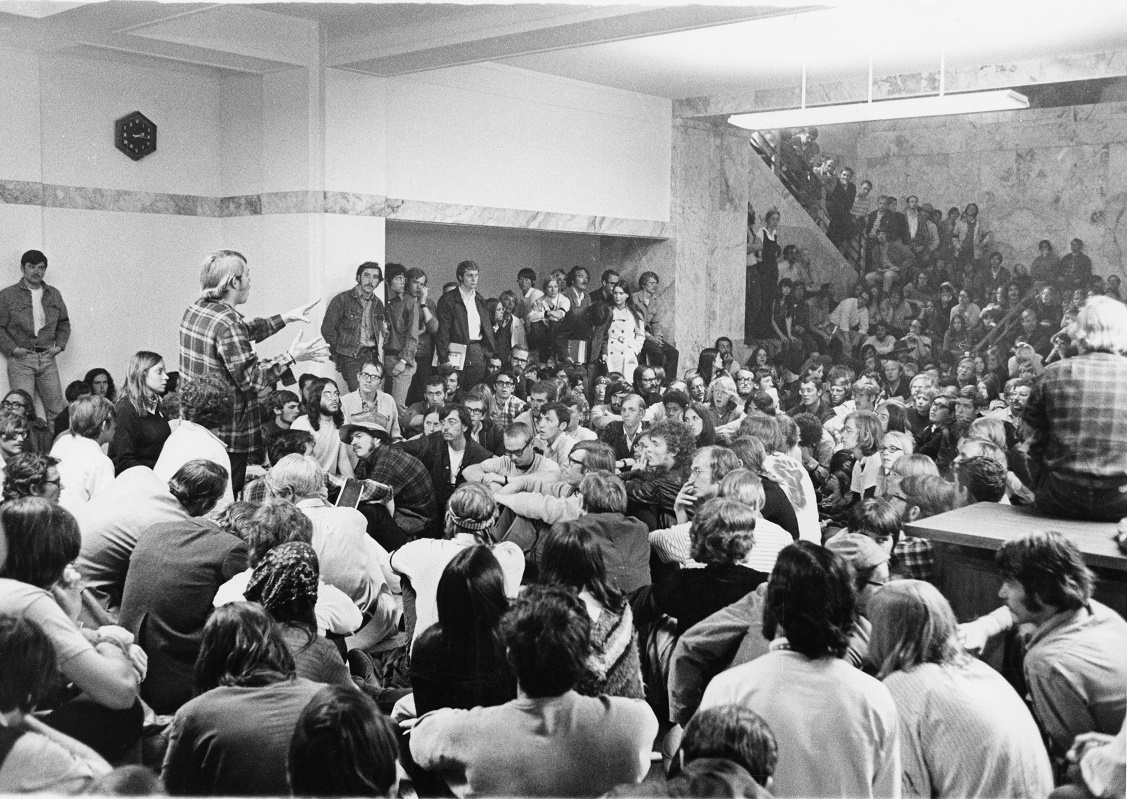
The Broad Ax was a Black-owned weekly newspaper that began publishing in Salt Lake City in 1895. Nearly three-quarters of a century later, Black students at the U, inspired by the earlier publication, embarked on a publishing project of the same name under the direction of Journalism professor Sandra Haggerty, who also worked as a moderator on KSL radio and as assistant city editor to Deseret News during the seventies. The Institute for the Study of Black Life and Culture supported the project while it was in the planning stages in 1973.
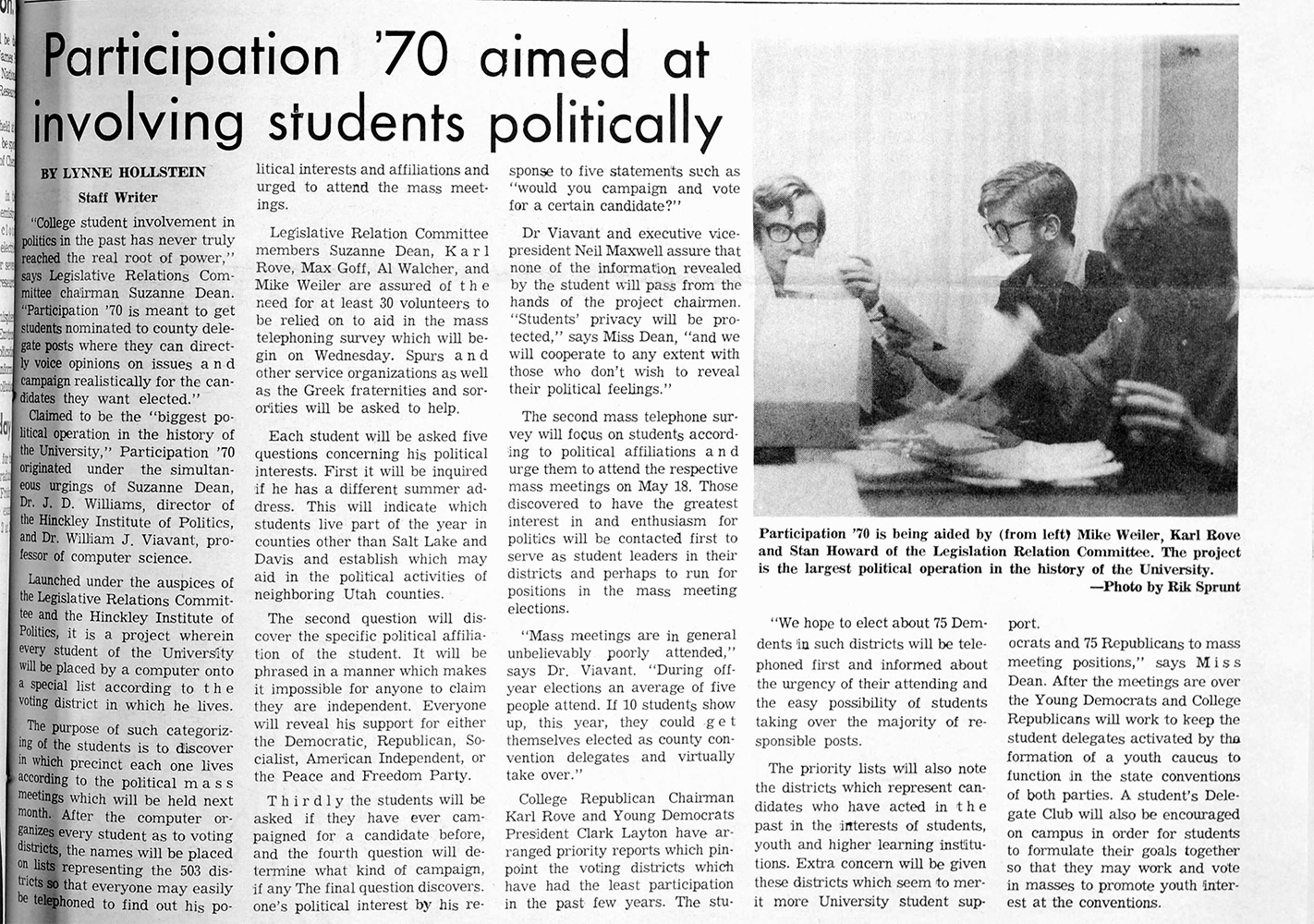
This photo by Rik Sprunt depicts students Mike Weiler, Karl Rove, and Stan Howard, who, as Legislative Relations Committee members, were involved in “Participation ’70,” designed to generate student interest in local government representation. The project used a computer algorithm to sort the student body into voting districts and encourage their involvement in direct political participation. Those results led to a phone campaign wherein Committee members told students about the districts and meetings that were uniquely relevant to them.
Questions for Closer Looking
What 1970s issues are still being discussed today?
Are there new issues that you are passionate about that might have seemed less important in the 1970s?
Compare Looking for a Space or some of the examples from the Utonian and Utah Daily Chronicle to your own school's yearbook, newspaper, or orientation material. What differences or similarities do you notice about them? Why do you think they are similar and why might they differ from today's material?
How have technologies have changed the ways today's students communicate their concerns about issues? What means of expression that existed in the 1970s are still being used today?
A Complex of Interlocking Forms: Campus Arts and Culture at the University of Utah
Going from Void to Void: Growing the UMFA
Utah on a Turning Globe: Campus of Discontents
A Limited Closed System: Science, Technology, and the First Earth Day
The Will to Respond: Arts and Culture Answer Back
Time Trip Resources

